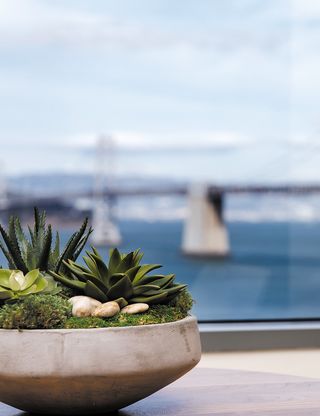A History of Rincon Hill, San Francisco

Early History
This area was originally part of the traditional lands of the Ohlone people, who lived in villages along the coast of what is now Northern California.
When Spanish explorers arrived in the late 18th century, they encountered Ohlone settlements in the San Francisco Bay Area, including Rincon Hill. The Spanish established missions and presidios in the region, and the area around Rincon Hill became part of the Mission San Francisco de Asís (Mission Dolores) lands.
In the early 19th century, as California transitioned from Spanish to Mexican control, Rincon Hill remained relatively undeveloped. However, it became a grazing area for cattle and a site for small-scale agricultural activities.
By the mid-19th century, as the population of San Francisco began to grow with the arrival of American settlers and immigrants from around the world, Rincon Hill started to see more substantial development.
The California Gold Rush
When gold was discovered in the Sierra Nevada foothills in 1848, thousands flocked to the area hoping to strike it rich. Beyond mining or panning for gold, the Gold Rush also provided lots of opportunities for entrepreneurs, merchants, and bankers to capitalize on the growing population. As San Francisco’s infrastructure and economy began to expand, Rincon Hill became a coveted residential neighborhood with its commanding views of the bay and convenient waterfront location.
Taken from the Spanish word “rincon” meaning "corner" or "angle, Rincon Hill was named because of its location at the southeastern corner of the original San Francisco peninsula, where it juts out into the bay.
Wealth, Prestige, & Architectural Grandeur
By the 1860s, Rincon Hill had become San Francisco’s first truly fashionable neighborhood for the local elite, famous for its extravagant Victorian mansions as well as the exclusive fetes they hosted.
Prominent residents included pioneering businessmen such as Edward Church, who erected an elegant Queen Anne mansion on the southern slope of Rincon Hill at 1057-1065 Market Street; Peter Seder, whose grand Italianate residence at 2020 Pacific Avenue was later acquired by the University of California at Berkeley; and former mayor Thomas Selby, whose Italianate mansion at 1017 California Street commanded attention near the summit of Rincon Hill. Other wealthy residents ranged from the Fuller family (of the Fuller Paints company ) to James Donahue (president of the San Francisco Gas and Electric Company), Bank of America founder William C Ralson, politician and senator William McKendree Gwin, influential historian Hubert Howe Bancroft, and many more.
Rincon Hill was also associated with the Bohemian literary and cultural scene in San Francisco during that time, with residents that included authors Bret Harte, Charles Warren Stoddard, and Robert Louis Stevenson; political economist and social reformer Henry George; newspaper publisher William Randolph Hearst (born on Rincon Hill); and Jack London, whose Rincon Hill birthplace is marked by a plaque on Third Street near Brannan.
The Second Street Cut
Completed in 1869, the Second Street Cut had a transformative impact on the landscape of San Francisco, particularly Rincon Hill. This engineering feat involved cutting through Rincon Hill, effectively leveling the top of the hill and creating a passageway through its steep slopes.
The decision to create the Second Street Cut was driven primarily by the city's rapid growth and the need to improve transportation infrastructure between the downtown area and the South of Market district. Due to its steep slopes, Rincon Hill presented a significant obstacle to efficient transportation between these two areas.
Engineers recognized that cutting through Rincon Hill to create a passageway would not only facilitate easier access between downtown and the South of Market but also alleviate traffic congestion and improve connectivity within the city. Additionally, the Second Street Cut provided a solution to the logistical challenges posed by the hilly terrain, allowing for the expansion of urban development and the construction of new streets, buildings, and utilities.
While the Second Street Cut markedly improved ease of access between SoMa and downtown, it was a disaster for the aesthetics and property values of Rincon Hill, leaving once-elegant mansions now exposed on the side of a steep bank. With the advent of cable cars in the 1970s, wealthy residents fled to posh new neighborhoods in Nob Hill and Pacific Heights, and the area began to fall into disrepair.
The 1906 Earthquake
Situated near the epicenter of the 1906 earthquake, Rincon Hill endured extensive damage from the violent shaking and subsequent fires that swept through San Francisco Many of the grand Victorian-era mansions and buildings on the hill were reduced to rubble, while others suffered severe structural damage. The devastation forced even more residents to flee their homes, leaving behind a scene of destruction and displacement. In the aftermath of the earthquake, Rincon Hill became a focal point of the city's rebuilding efforts. New building codes and regulations were implemented to enhance seismic resilience, leading to the construction of more modern and sturdy structures as well as a more industrialized neighborhood.
20th Century Redevelopment
In the early to mid-20th century, Rincon Hill became home to warehouses, factories, and other industrial facilities, reflecting its proximity to the waterfront and South of Market district. However, this industrialization also led to the displacement of some residential communities and changes in the neighborhood's demographics.
By the mid-20th century, Rincon Hill began to experience a decline in industrial activity, mirroring broader economic shifts in San Francisco and the United States. Many industrial buildings were abandoned or repurposed, and the neighborhood saw a decline in population and economic activity, especially as the Embarcadero freeway (constructed in the 1950s) cut the neighborhood off from the the nearby Financial District
However, by the late 20th century and into the 21st century, Rincon Hill experienced a residential boom and a surge in high-rise development. The construction of luxury condominium towers and high-rise apartment buildings transformed the neighborhood's skyline and attracted affluent residents to the area.
The East Cut & Beyond
Today, Rincon Hill has emerged as a hub of innovation and urban living along with The East Cut, a newer neighborhood designation that encompasses Rincon Hill along with parts of neighboring districts. Recognized for its luxury residential towers and proximity to downtown, Rincon Hill and the East Cut also offer an abundance of green spaces, parks, and waterfront promenades. Ongoing development projects and initiatives continue to enhance the neighborhood's livability and connectivity while preserving its unique character and heritage.
The Towers at Rincon
Explore luxury amenities and high-rise views at the Towers at Rincon. Contact us today for more information and to learn about our latest move-in specials.









